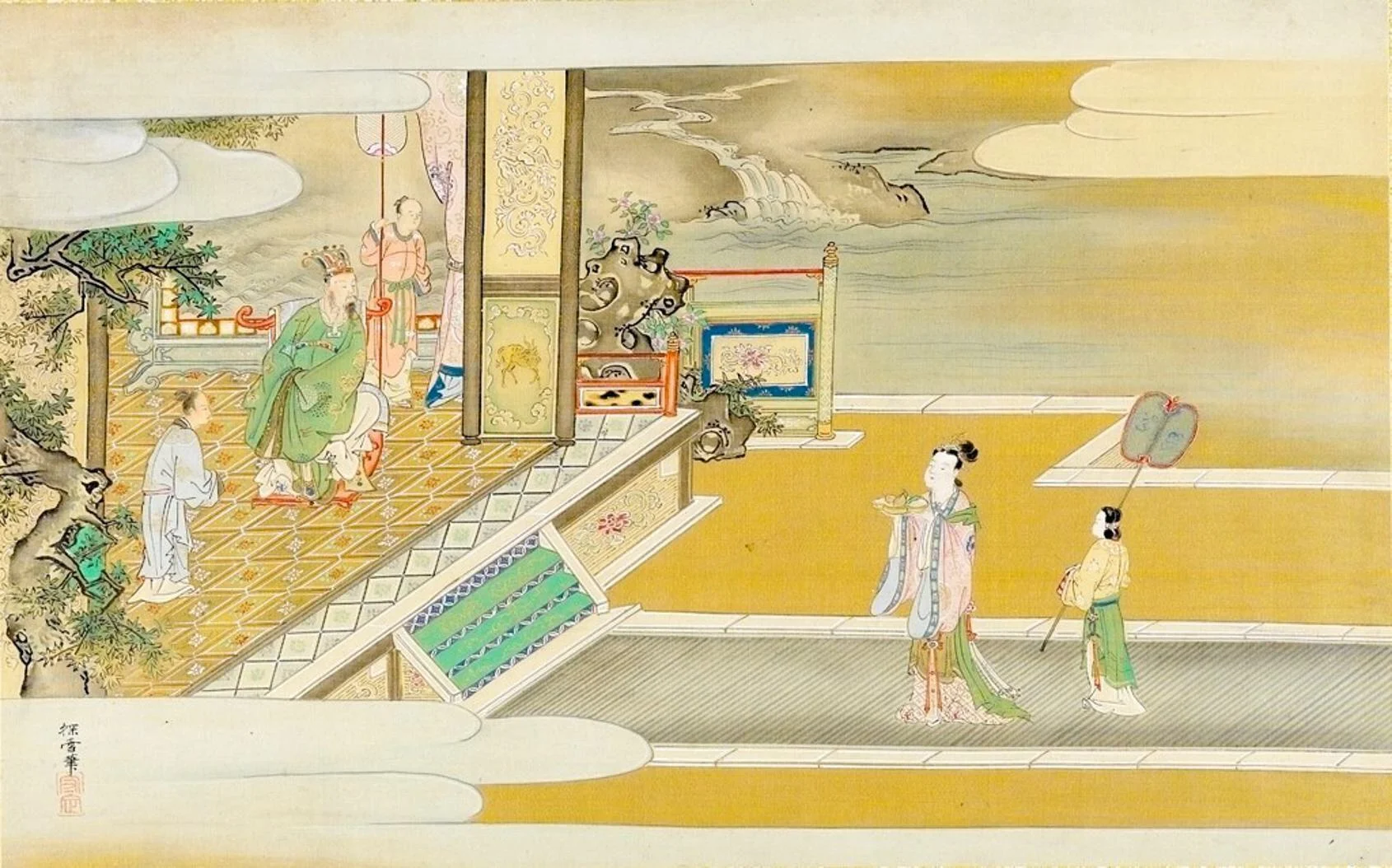
Arguably, the most famous love story in the Western world is the tale of Romeo and Juliet, made immortal by Shakespeare's genius. In Southeast Asia, though, the saga of Yang Guifei and Emperor Xuanzong is seen as a classic example of deep, true feelings between a man and a woman. This story, however, is completely different from the story of the young Veronese couple.
A girl born in the year 719 to the Yang family was given the name Yuhuan, which means ‘jade ring’. In China's Tang dynasty, the jade stone was considered the most precious gem, and it had an esteemed reputation, though with an obvious erotic connotation. For instance, intimate parts of the body were referred to as ‘jade stems and cups’, and jade was considered the stone of love, passion, and sensuality. So, the girl's name was, shall we say, slightly frivolous for the tastes of a post-Christian civilization.
However, the girl came from an educated, high-ranking family, although not perhaps a very wealthy one, and she was originally raised to be a concubine to a prominent aristocrat. After losing her parents when she was very young, she and her three sisters were taken into their uncle's household, where their musical, literary, and dancing talents were nurtured along with their cousins.
Yuhuan was the most beautiful of the sisters, and she was fortunate enough to become a concubine in the harem of a representative of the imperial family. According to some sources, this was the son of the ruling emperor Xuanzong, Li Mao, while others suggest that she was taken in by the emperor's brother, Prince Shou.
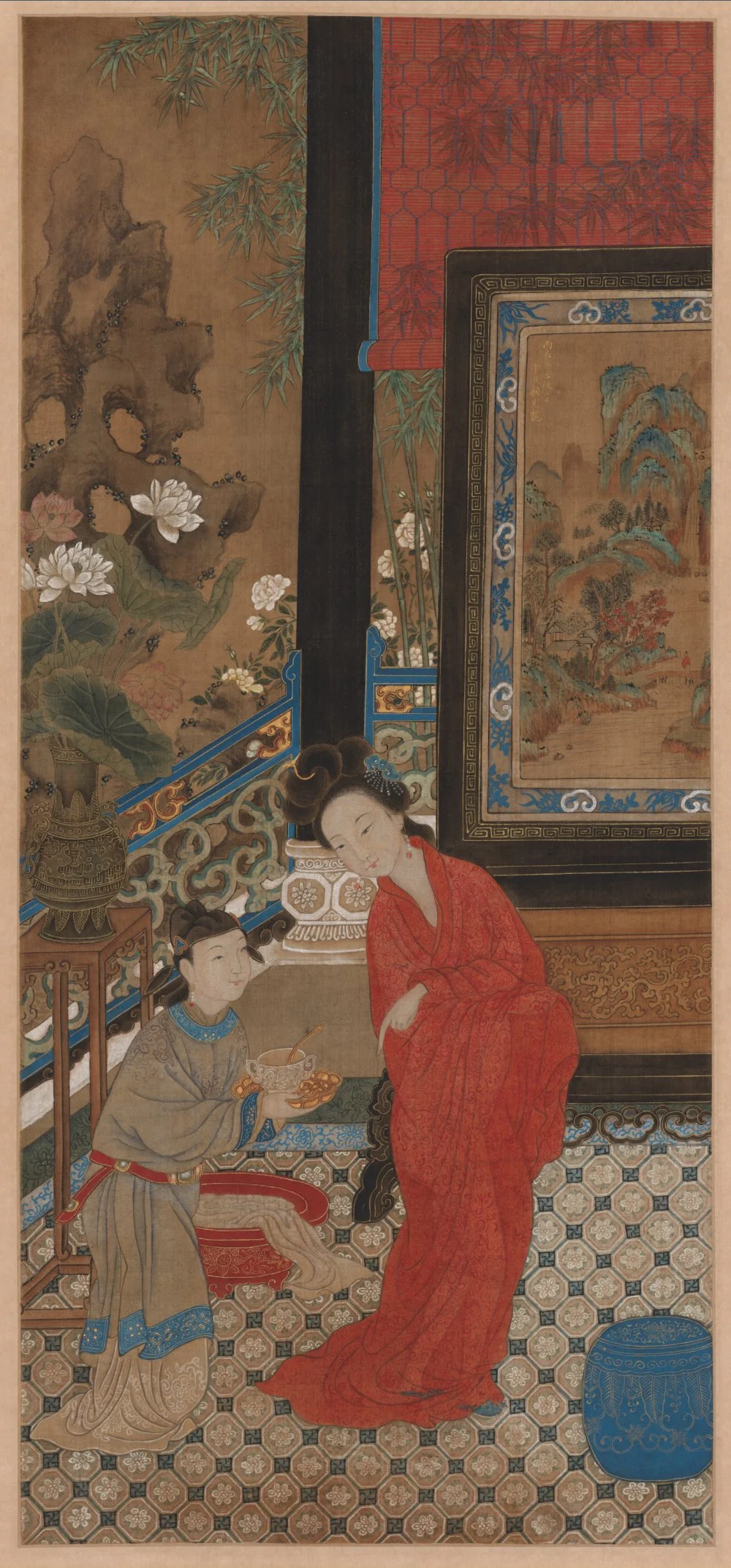
Very little is known about her life in the harem, but it seems that her beauty and talents did not go unnoticed. In any case, she caught the eye of the eunuch Gao Lishi, who noticed that she looked very similar to the recently deceased empress, one of the emperor's wives, whom he was still grieving for.
When the emperor heard about the stunning beauty hiding in his relative’s palace, he paid them a visit, and Gao Lishi went to great lengths to arrange for the emperor to secretly spy on the beauty bathing in the pool. Upon seeing her, the emperor, who was already in his sixties, was ecstatic and ordered that the girl be taken from the harem.
In exchange, the emperor gave the beautiful young daughter of a high-ranking official to the prince (or duke) as a wife, and if anyone was dissatisfied with this arrangement, they wisely kept their silence. Navigating and surviving the imperial court of the Tang dynasty was, to put it mildly, not a safe endeavor—executions were common and frequent, claiming the lives of princes, dukes, wives, concubines, servants, and courtiers. Even the emperor himself, while he was still the heir to the throne, narrowly escaped hanging or being stabbed a few times.
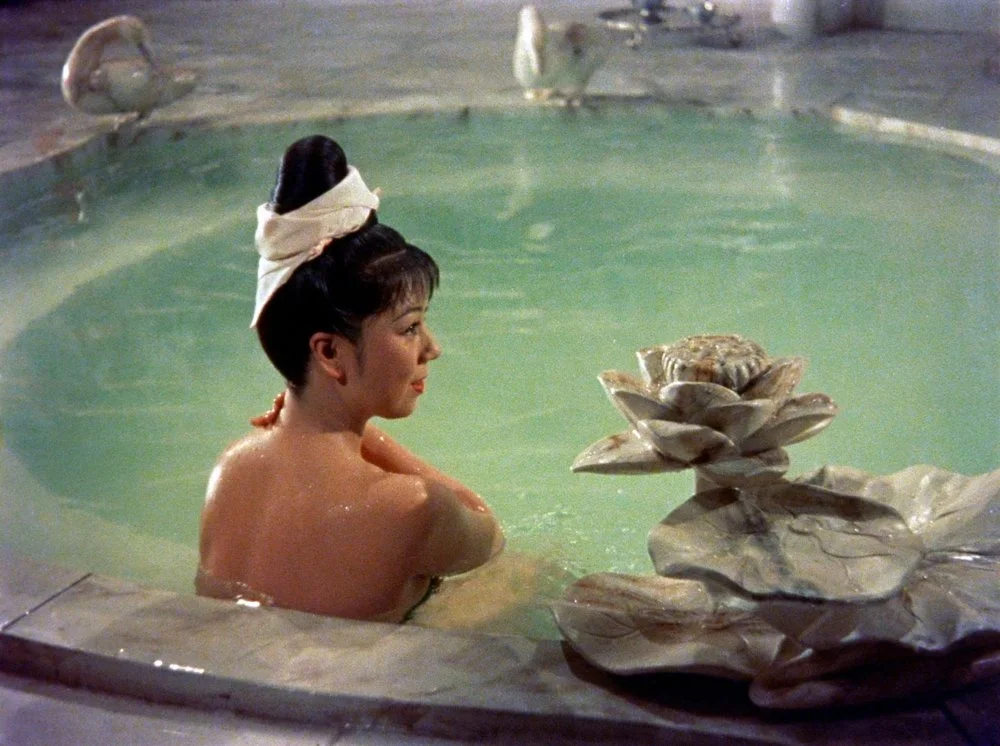
Since it was impossible to bring a former concubine into the Son of Heaven's palace, and nor was it acceptable to grant such a person a high rank, an elegant solution was implemented on Gao Lishi's advice. Lady Yang was temporarily sent to a Taoist monastery, where, as if she had received a new life, she lived as a nun named Taizhen. And then this completely new, just born, pure individual was presented to the emperor under a new name with all the ceremonies.
The Institute of Imperial Concubines
The structure of the harem in China was extremely different from that of the Arab or Central Asian world. First, in China, not only could many men not dream of having a harem, but they could also not imagine having one wife. This is because most young and even somewhat attractive women were already married off to men from higher social classes in various arrangements. For example, according to the norms of the Tang dynasty, commoners could only have one wife. However, only if a man had no male heirs by the age of forty was he allowed to buy himself a concubine to try and conceive a son with her.
Educated people from affluent families, however, had some privileges. They were allowed to purchase a concubine by the age of thirty if they had no sons. Further, a scholar or wealthy merchant could marry two women provided that they were related to each other. For example, they could be sisters or a mistress and a servant—in the latter case, the servant would become the younger wife, with a status similar to that of a concubine.
A wife was different from a concubine in terms of the contract and dowry that she received. When a girl got married, her dowry was provided by her parents, and her husband had various financial obligations toward her. On the other hand, a concubine was usually purchased from her parents or owners with gold and silver, making her the property of the buyer. However, if she gave birth to a son, her status would rise sharply.
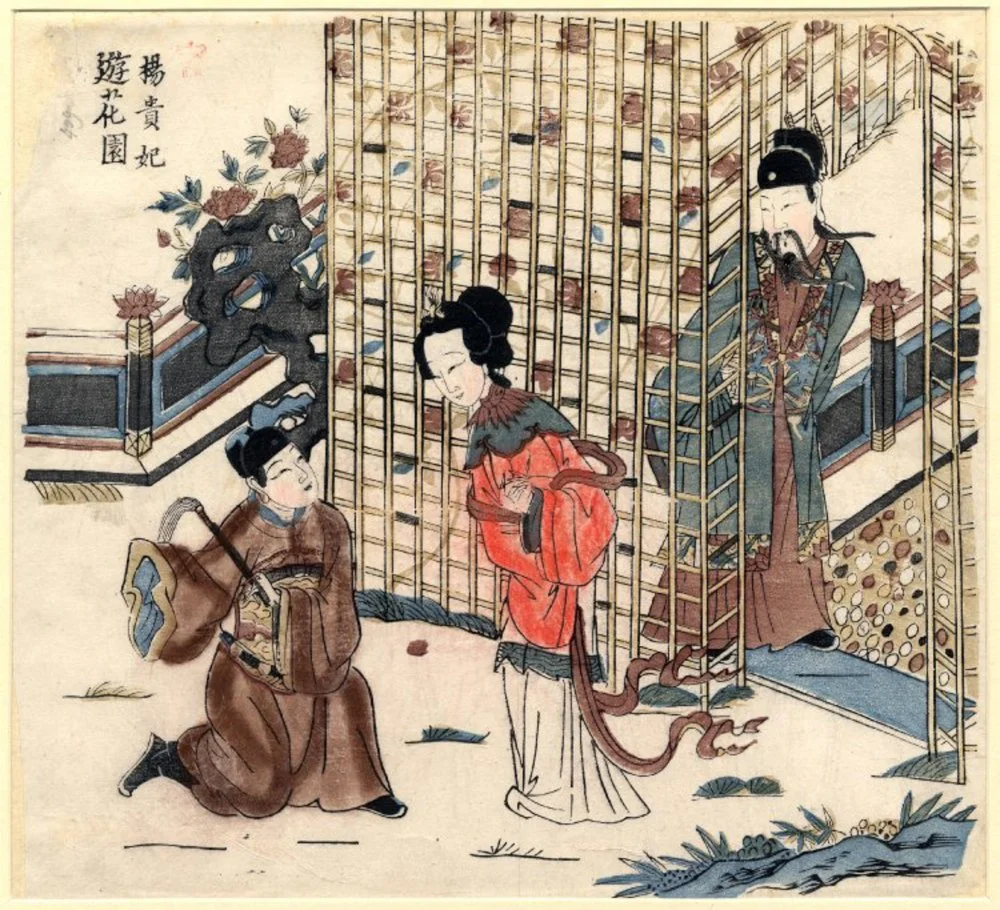
Widows and single women whose parents had died enjoyed some independence, but their sexual freedom was quite limited. Without an official document allowing them to engage in, for example, sex work and lead a strictly regulated lifestyle in that profession, they were punished severely for fornication.
The maidservants were in a separate category, and they were sometimes purchased and sometimes hired, but in general were considered to belong to their owners. Therefore, their moral behavior was overseen by their owner, not the state, and if the owner did not object to Yunyan dating the stableman and Sunyan dating the tea shop supervisor, then it was fine. Nevertheless, a maid could even be killed, and investigations rarely led to the owners being punished as there was always an important justification for such an action.
We understand that most people in any era in any country were not devoid of common sense or attachment to those familiar to them, or compassion, and therefore did not seek to beat servants to death. But they often covered up the misdeeds of members of their household in front of the authorities. Nevertheless, the right to dispose of the life of a subordinate who had transgressed in China during the Tang dynasty was almost sacred. And this must be remembered for a better understanding of the facts that follow.
Only the aristocrats or very rich and influential people could have large harems of five to ten wives and concubines (plus maidservants), and in China, there was only one truly large harem—the imperial harem
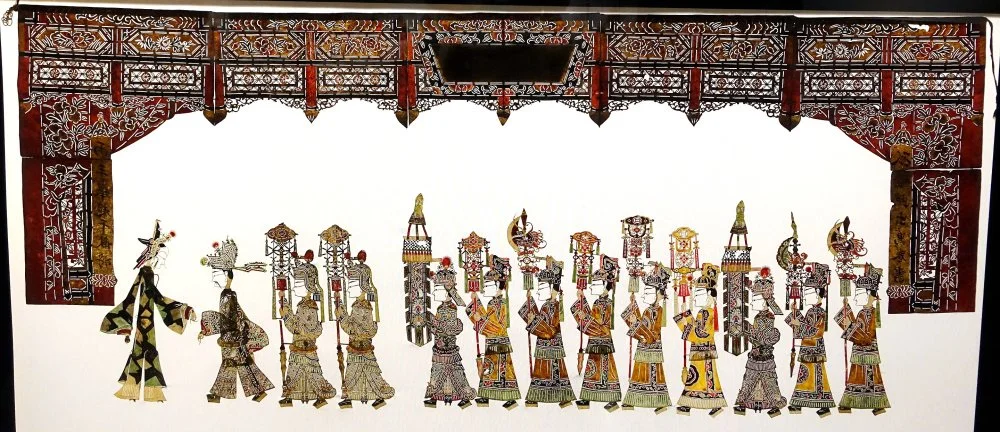
According to the famous sinologist and doctor of sciences Victor Usov, there were a total of eight ranks of women in the emperor's palace, not including the servants:
Historian Wang Yapin provides a list of the hierarchy of wives and concubines. At the top of the list was the empress, or the chief wife of the Son of Heaven (huang hou), followed by four additional ‘wives’ (fu zhen), each of whom held a special title of a precious (gui fei), a virtuous (shu fei), a moral (de fei), and a talented (xian fei) concubine. According to the treatise Li Qi and other authors, there were also three favorite ladies occupying the highest rank, and nine ‘senior concubines’ (jiu bin) occupying the second rank; followed by twenty-seven ‘junior concubines’ (shi fu), who, in their turn, were divided into nine ce yue (maids), nine mei zhen (beauties), and nine cai zhen (talents), occupying the third, fourth, and fifth ranks respectively; and eighty-one so-called ‘harem girls’ (yuan yi ci). They were also divided into three categories: twenty-seven precious forest girls (bao lin), twenty-seven imperial women (yue nuy), and twenty-seven collector women (sai nuy), occupying the sixth, seventh, and eighth ranks.i
Based on Usov’s works, the complex numerology associated with the ranks of the emperor's women came from the ancient Chinese belief that the emperor's sexual behavior determined almost everything. As the primary bearer of the male, fire, celestial orderly element yang in the country, the emperor had to manage it very carefully while dealing with the female, cold, watery-earthy chaotic element yin.
If the emperor rarely and reluctantly pleased his concubines in bed, then drought would spread throughout the world, crops and forests would catch fire, and infertility and famine would ensue. If the emperor, on the other hand, fought drought with all available means, then the abundant female energy in the palace would cause heavy rains to pour down on the earth, leading to floods, storms, and uprisings.
And so, they had to meticulously calculate and determine who would receive attention, how, when, and how much. The higher a woman's rank was, the more yin she had. For example, the emperor could touch the empress no more than once a month. He could look at lower-ranking girls more often, and the maids were not counted at all. But he could not leave anyone without attention as drought never sleeps.
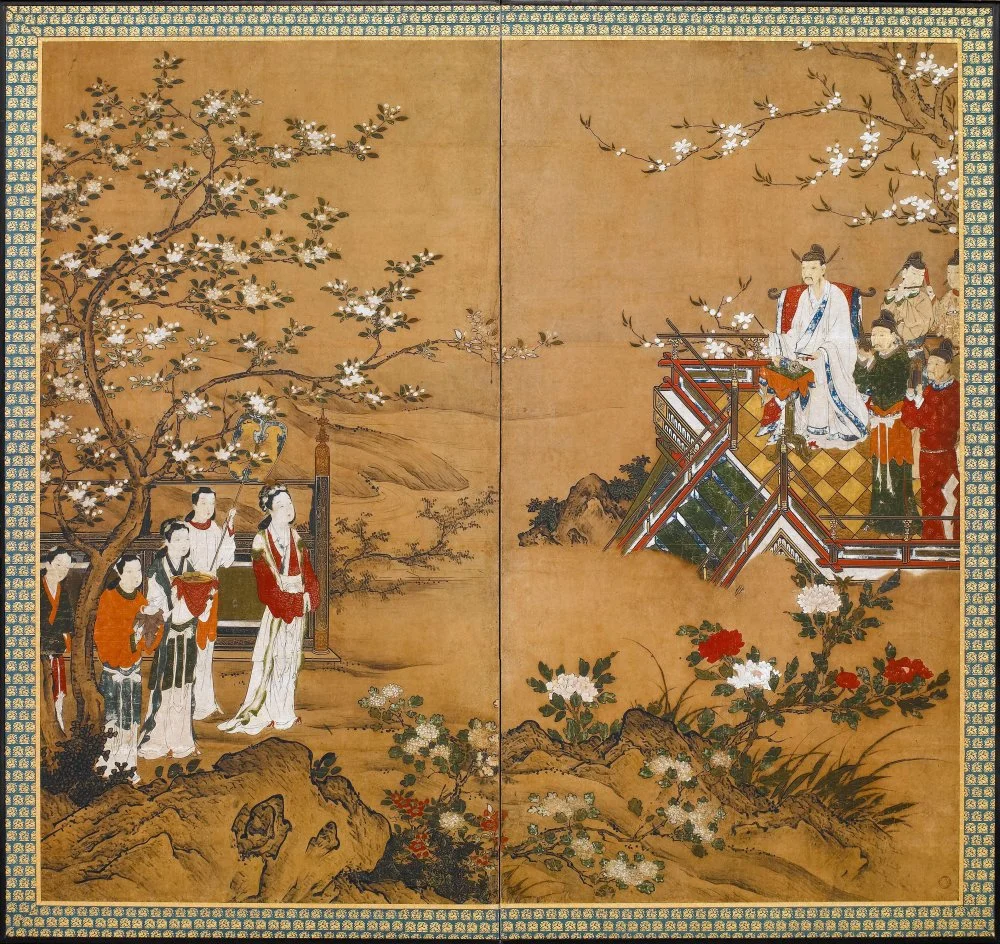
Presumably, during the reign of Xuanzong, there were no droughts. The monarch went down in history as being extremely fond of women. A dozen historical chronicles claim that up to 40,000 women lived in his harem, which was an absolutely incredible number compared to his predecessors, who usually rarely kept more than 1,000 or so beauties.
While the numerology of the ranks allowed for having officially a little more than 100 concubines with access to the emperor's body, the reality was that in addition to all the concubines and their countless servants, there were also girls living near the palace waiting for a possible promotion. The emperor could go his entire life without laying eyes on most of these girls, only occasionally trying to find something exceptional in his harem with the help of informed eunuchs. This is assuming, of course, that he was in good health, because, as we have previously mentioned, it was improper and spiritually perilous to disregard women who had held a rank for an extended period. Neglecting them could result in calamities for the nation such as locusts, or a chickenpox epidemic, or various other horrors.
So the majority of young girls selected for the emperor's harem by the palace eunuchs simply spent a decade sitting gloomily on a mat in the company of thousands of others like themselves, and then the girls were graciously released to their parents or were granted freedom altogether with a discharge document and a small reward. But if the emperor called her to visit him at least once, that was meant to result in something. The girl was entitled to some manner of rank because of it. You would not be able to kick her out of the palace or strip her of her rank without serious wrongdoing. Thus, he would visit her at least a few times a year, even if upon closer inspection she turned out to be dull. If he did not, the courtiers would nag him to death and place the blame for all the troubles of the Celestial Empire on him.
So it is no wonder that the aging emperor was very, very picky while searching for a new concubine, even shamelessly spying on candidates in a private bathing area. The Taoist nun, an orphan from the Yang clan, captured his heart so completely that she immediately received the highest rank of guifei, a precious concubine, which was just below the rank of the empress herself. Unlike the empress, however, the guifei could be with the emperor very often, especially if the meeting was not about sexual pleasures, but about emotional communication, friendly conversations, and joint music-making.
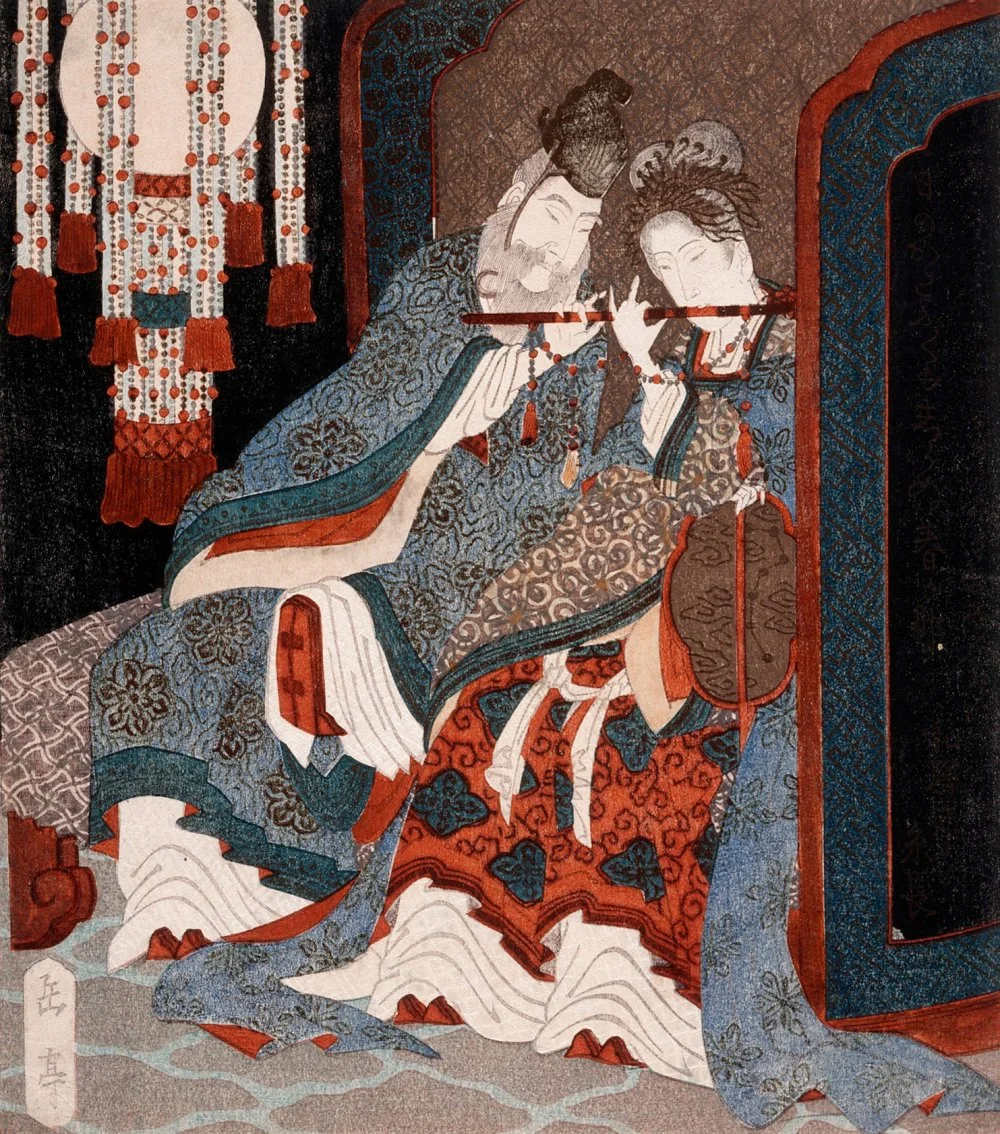
After all, Xuanzong passionately loved music, and Yang Guifei was already famous in her previous harem as an unsurpassed musician who played several string instruments. It is possible that she also played wind instruments, but we will get to that later. During Yang Guifei's performance for the emperor, the court orchestra played music written by Xuanzong himself. It was called Bright Dress from the Rainbow, Headdress from the Shimmering Feathers, and this piece became the anthem of their love.
A Pair of Inseparable Birds
This extraordinary pair is depicted vividly in various ancient texts. It should be noted that much has been written about Yang Guifei, including fables, tales, chronicles, and poems, many of which have survived to this day. These include Bai Juyi's poem Everlasting Sorrow (ninth century), Bai Pu's play Rain in the Platanus (twelfth century), and works by Qin Chun (eleventh century) and Li Shi (tenth century). The excerpts that follow are interpretations of scenes depicted in these sources, providing a glimpse into this great love story.
Oranges from the first harvest of trees newly planted in the gardens in the capital city of Chang'an have been brought into the palace courtyard. [Let us also take a moment to recall that this takes place during the early medieval climate optimum, when, for several centuries, the temperature on the planet rose so much that southern plants began to thrive in previously unsuitable areas.]
Among the oranges, two have grown intertwined as one, and the emperor and Yang Guifei marvel at them, finding a resemblance to their own fate in the fruits. They eat the double fruit together and order a court artist to capture this moment.
Here is a favorite of the royal couple—a parrot named Girl in White Clothes, caught by a hawk. After the poor bird's body is retrieved from the predator, the emperor and Yang Guifei bury the bird, raising a grave with a poignant inscription.
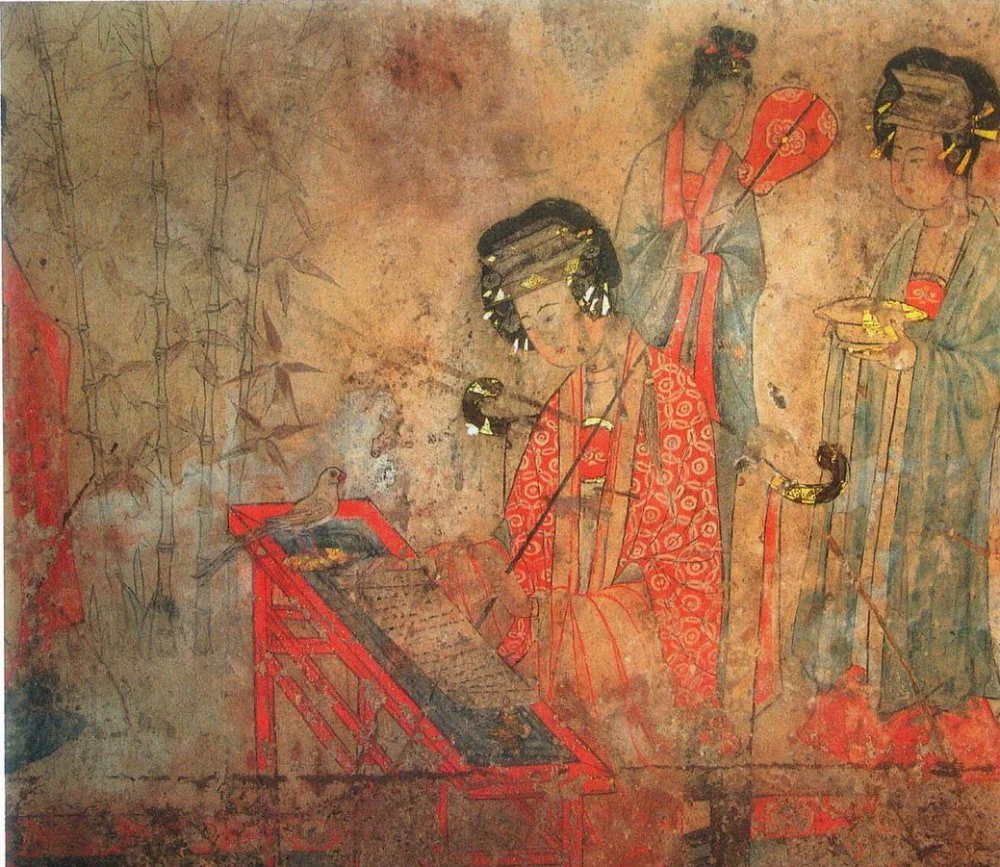
Here come the messengers of the imperial courier service, riding horses in relay, to deliver a basket of ripe and fresh lychees from the south to Guifei for breakfast—she loves southern lychees, and those spoil so quickly…
Here they bring colorful, newly grown peonies to the court, [a new flower, almost unknown and unseen], Guifei touches the petals, and the Emperor thinks that the petals have been stained by her blush—and the officials bow and swear that the spots have permanently soaked into the white petals, and that this bush will now always bloom with white flowers with red markings in honor of the concubine's touching them with her fingers.
Here they are arguing over some nonsense, and the emperor, in a fit of anger, sends Guifei away from the palace. For a whole day, he is unhappy and disturbed and cannot eat until Gao Lishi arranges a meeting for them to reconcile, and the emperor has never seemed happier.
And now the tale unfolds of Yang Guifei's serious transgression, even a crime, and the chronicles only speak of it in hints. The emperor’s younger brother, the handsome Prince Nin, comes to the emperor, and the brothers drink and fall asleep in a tent in the garden, with the loyal Yang nearby...
Zhang Hu wrote these lines about it:
‘In the deserted Pear Garden she played on the flute of Prince Nin.’i
As expected, the emperor was furious, and Yang was banished from the palace again. Her family waited anxiously for the decree of her suicide, but the emperor could not bring himself to sign the fatal order. When a letter from Guifei was brought to him, in which she confessed to being a guilty slave who would immediately end her useless life, she enclosed in it a keepsake that he had admired so many times before: a long strand of black hair slipped out of the scroll. At the sight of this lock, the emperor began to weep and demand that Yang, regardless of her guilt, be immediately returned to him. He offered her complete forgiveness and absolution!
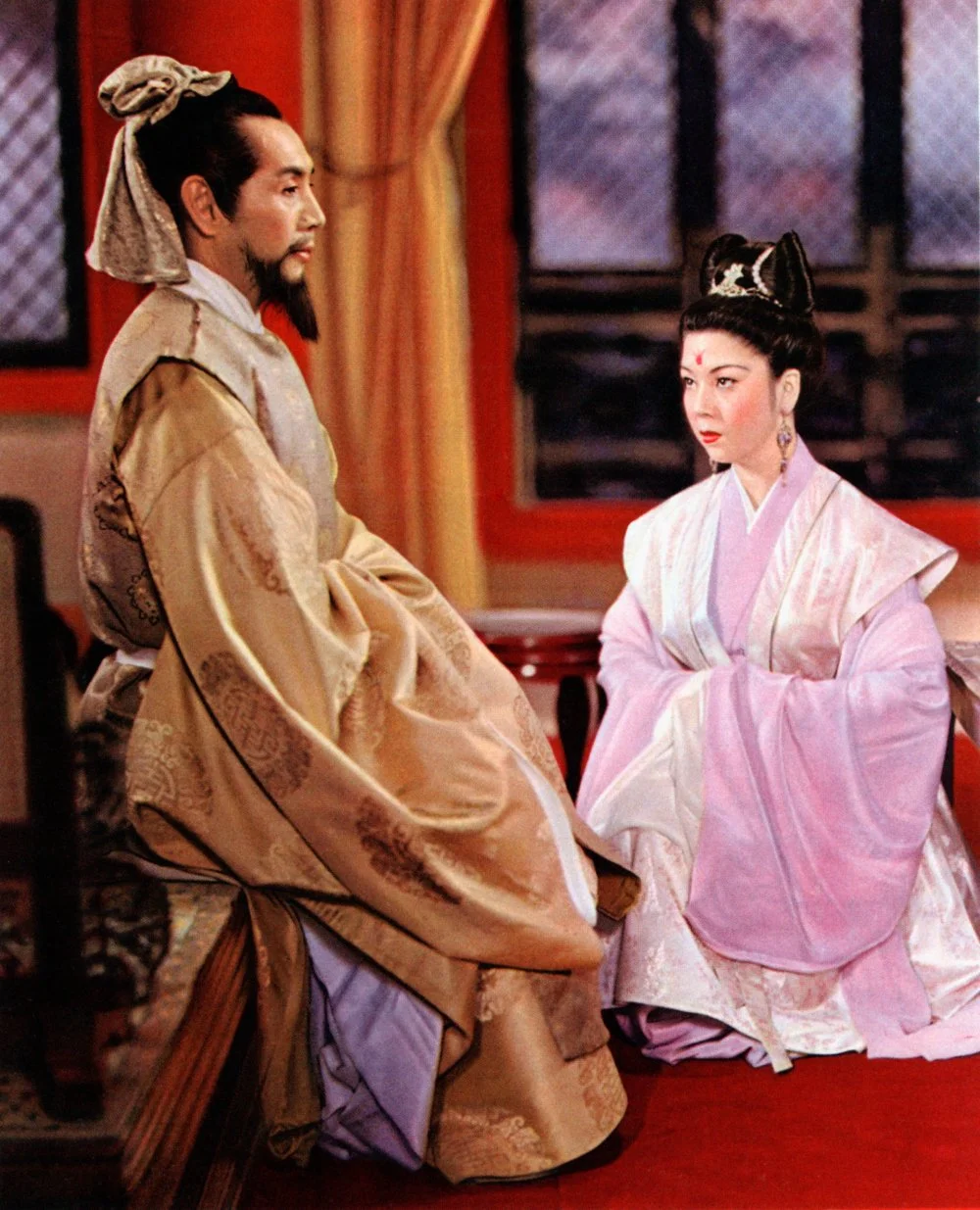
We do not know what Yang Guifei looked like because all descriptions of her in various sources are the classical conventional descriptions of any typical Chinese beauty: her skin was as white as water lilies, her hair was like black clouds, her eyebrows were like willow leaves, and so on. However, there is one feature of her appearance we are certain of. Once, the emperor and Guifei were listening to an old story about an empress nicknamed Fluttering Swallow. When she danced in the garden for her husband, she was secured to a stake with a belt so that the wind wouldn't carry away the fragile and weightless beauty. ‘It's frightening to imagine,’ said the emperor, glancing at Guifei, ‘what a fierce storm it would take to carry you away…’ Yang Guifei was terribly offended because in reality, she was quite plump. This is completely atypical for a traditional Chinese beauty as they are usually delicate reeds, as weightless as feathers. But this is very similar to historical truth.
And Waters Rushed...
The emperor showered Yang Guifei with much of his attention and many lavish gifts, but what use were these thousands of gowns and golden ornaments to her, a virtual prisoner in the women's quarters of the palace? What purpose did gifts serve when she already lived in the utmost luxury of the imperial chambers?
What brought Yang great joy were tokens of affection for her family, her sisters and cousins, among whom she had spent a happy childhood and whom she seemed to love sincerely. She saw her sisters regularly; she wrote to her brothers and chatted with them through bamboo screens. These were her people, her kin, who would always be on her side, unlike the jealous and neurotic courtiers. It was in her relatives that Yang found solace.
Yang's family accumulated a vast amount of titles, ranks, estates, and precious jewels. Any complaint from them incensed Guifei, and the emperor shared her outrage. He saw any disrespect to this family as an insult to him. And so, within a decade, the extensive Yang clan held China firmly in their grip, and nobody dared to breathe a word of dissent against them.
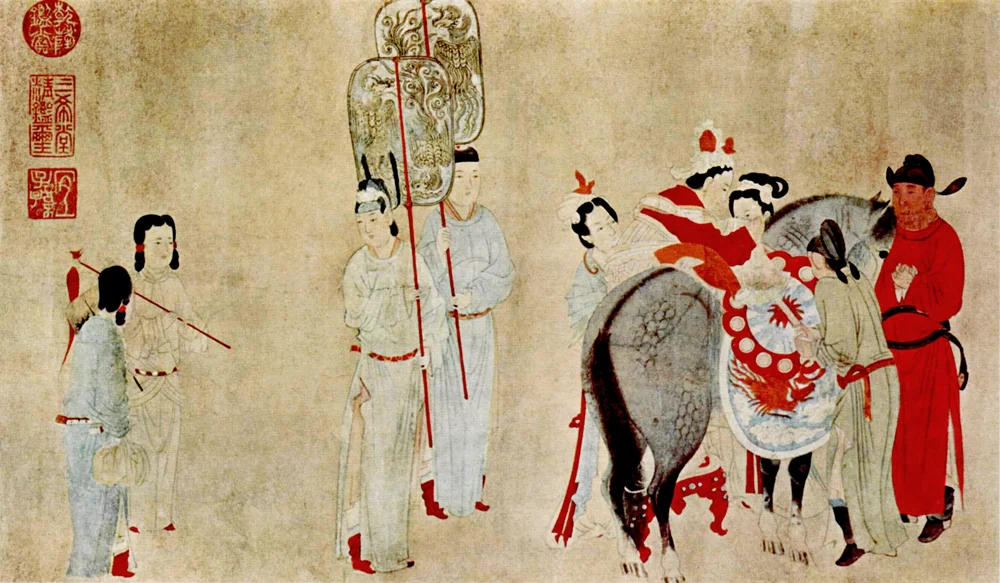
Xuanzong also had his favorite, a military commander named An Lushan. Further research sometimes refers to him as a Khitan, sometimes as a resident of Sogdiana, and sometimes as a Turk. For the Chinese, he was simply a ‘northern barbarian’. An Lushan had red hair, and he was fat, clever, and uncultured. Rising through the ranks of the Chinese army, leading his fellow tribesmen, he became famous for his rude behavior, inappropriate jokes, and ability to drink endlessly. Despite these traits, the emperor loved him and thought of him as his personal jester. He once jokingly demanded that Yang Guifei officially adopt An Lushan because ‘among his people, they do not know their fathers, only their mothers, so let him swear loyalty to a mother’.
Since then, An Lushan became the second man, after the emperor, who could barge into Guifei's personal chambers at any time. This, of course, caused many rumors and speculation about their true relationship, but the emperor paid them no attention. He loved Guifei, and An Lushan amused him with his camaraderie and humor, and by being so different from all other inhabitants of the palace.
However, An Lushan left for a long time to join his troops, and in 755, he raised a rebellion, bringing together several Chinese provinces, along with his troops, under his banner. Rumors immediately began to spread that this was being done with the knowledge of the Yang family, that they were trying to become an imperial clan by placing one of their representatives, the bold, handsome, and greedy Yang Guozhong, who was especially hated by the people, on the throne.
The upheaval was attributed to Yang Guifei, who had subjugated the emperor with her passionate yin and disrupted the order of the Celestial Empire. As we have already noted, any form of order clashed with this feminine element.
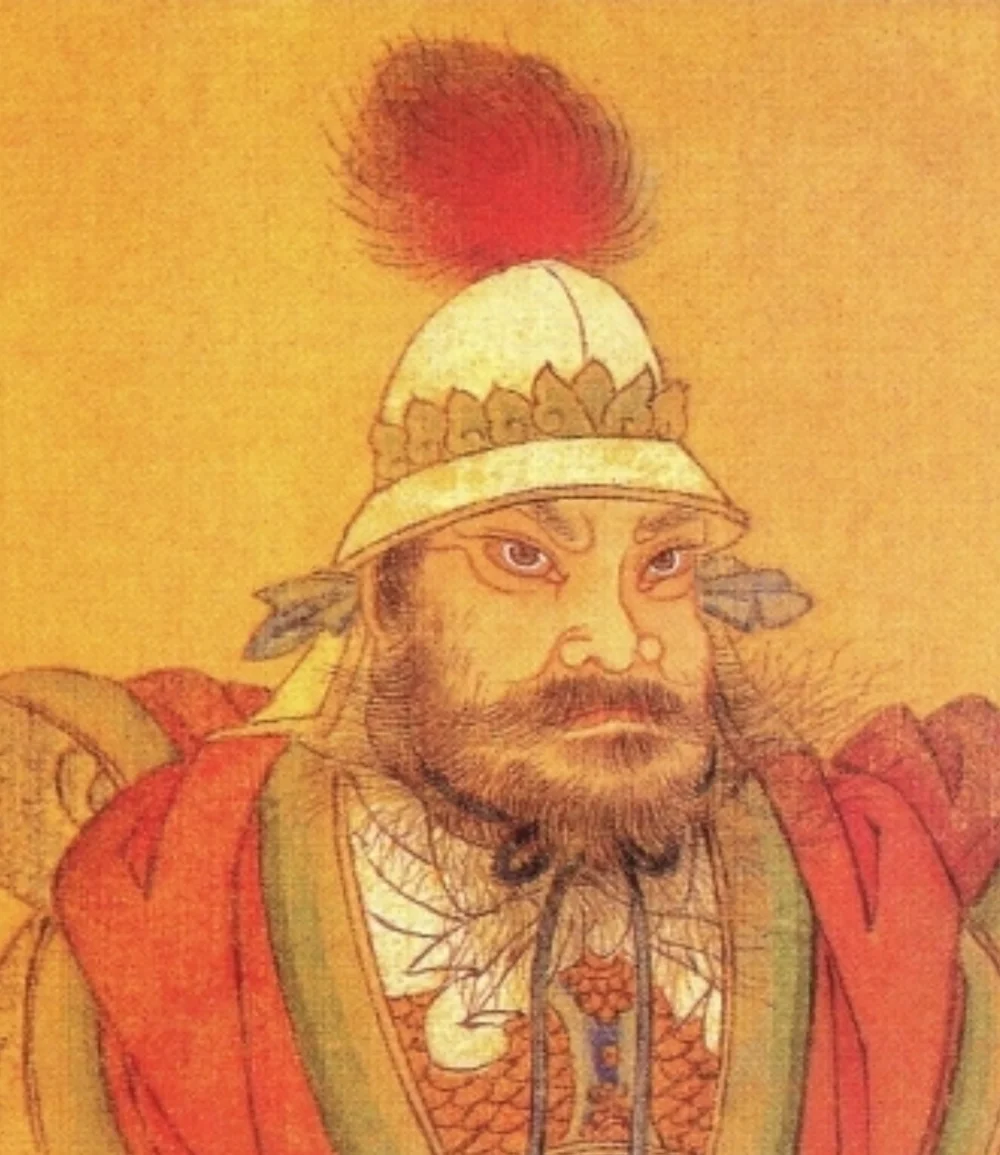
Chang'an fell, and the emperor and his small retinue were forced to flee. At the postal station of Ma Wei, the soldiers accompanying the escapees rebelled. They killed Yang Guozhong, who was next in line in the retinue, and blockaded the emperor with a few courtiers. They demanded that the ‘root of evil’ be destroyed. God forbid that they should harm the sacred emperor himself, but the imperial concubine Guifei had to be killed. The emperor wept and sighed, and then ordered Gao Lishi to take the consort out into the courtyard, beneath the pear tree, and strangle her with a silken cord. This order was duly carried out. Yang Guifei was thirty-six years old at the time of her death, while the emperor was seventy-one.
After that, the rebellion was suppressed for another two years, and according to provincial records, an estimated 20–30 million people were killed during that time. The emperor was effectively sidelined by his successors. He spent most of his time mourning Yang Guifei, hardly meeting with any other women and summoning Taoist priests who assured him that they could communicate with the dead. One of them even managed to reach the other side, located Yang Guifei in the Jade Palace, and brought back words of love from her, half of her golden hairpin, and a promise to be with Xuanzong in all his future reincarnations, ‘like inseparable birds’.

At this point, a modern reader, especially a woman reader, experiences significant cultural dissonance. The modern reader would struggle to understand the nature of this love, especially ending with a noose under a tree! After such a conclusion, the emperor does not deserve love letters from the afterlife, but something that would make him scream and twitch in his sleep every night instead. Even if the old man could not hold a sword anymore, he still needed to fight for his beloved!
This is, of course, due to the fact that fortunately, the modern reader does not (or even have to) understand how death was an everyday and omnipresent element of life at that time and how cruel the conditions were for emperors who gave countless orders for executions. And yes, it was much less painful to accept the inevitable death from quick suffocation than to die at the hands of an angry mob of soldiers.
However, in defense of the modern woman reader, it should be noted that even the Japanese in the ninth to eleventh centuries, who lived in the blessed and refined Heian era, without wars or the death penalty, shared her confusion. They were very inspired by the story of the emperor's love for the beautiful Yang, but its ending was completely distasteful and incomprehensible to them. Therefore, in Japan, legends and plays about Yang Guifei always ended with her managing to escape to Japan where she lived peacefully and happily for many years under the name Yohiki, enjoying general love and admiration.
Should we then decide that the Japanese were right, and this love story ended exactly this way? Only because in the ending that claims to be real, everything is very sad and unpleasant. However, with enough effort, this unpleasant ending could have a silver lining. For example, it is known that Yang Guifei's body was displayed to the soldiers so that they could see for themselves that the root of evil had been destroyed. Later, a cunning old beggar woman managed to steal the thin embroidered shoes and stockings from the corpse. She then exhibited them to audiences for a fee, eventually becoming wealthy, buying a house, and not having to beg for alms anymore.
So, this whole story did not end too badly after all, did it?